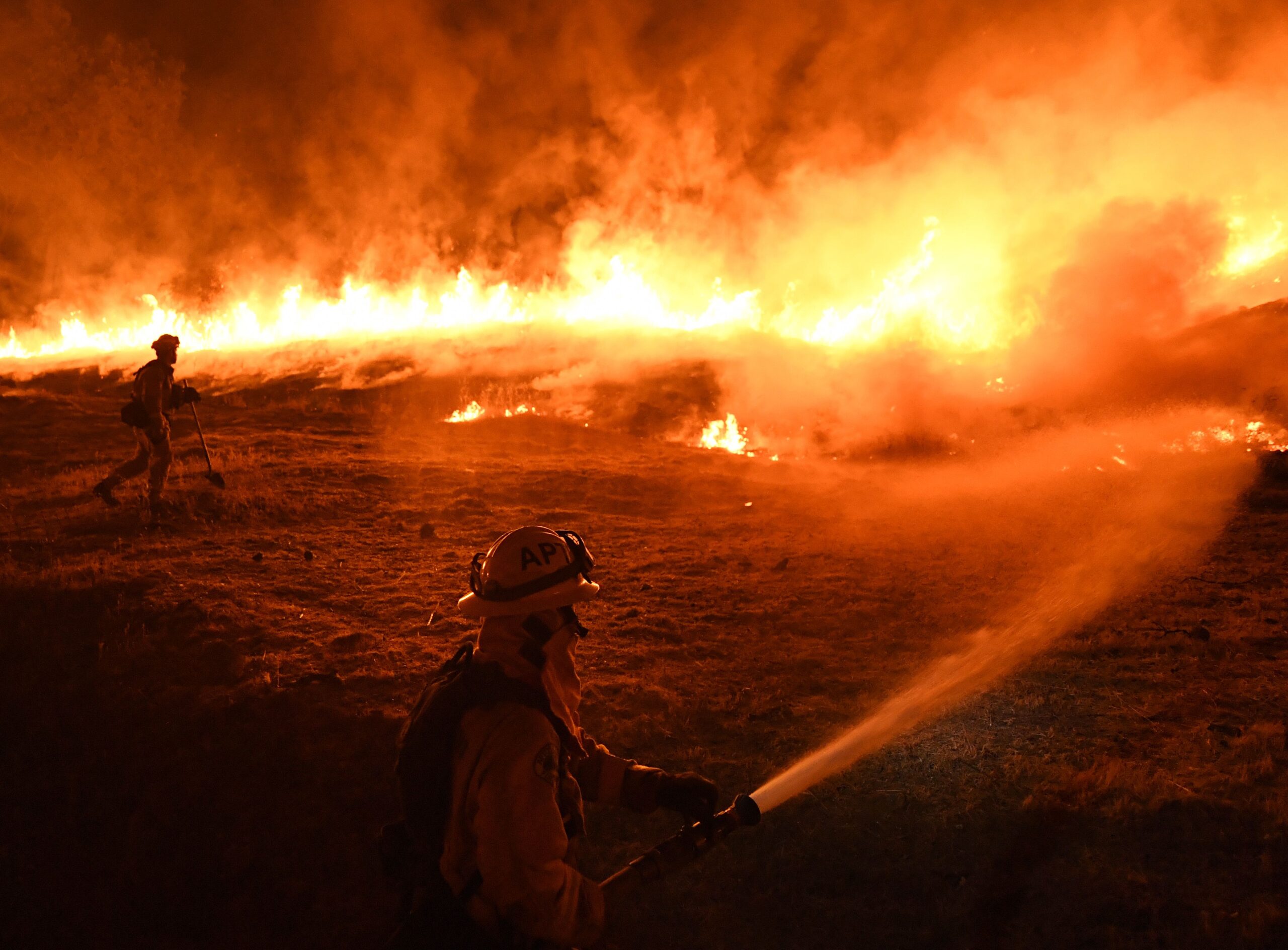California is no stranger to wildfires, and the Corral Fire in San Joaquin County has once again highlighted the state’s perpetual struggle against nature’s fury. As firefighters grapple with the blaze that erupted over the weekend, the situation is compounded by an impending heatwave threatening to exacerbate the already dire conditions.

This blog explores the details of the Corral Fire, the challenges faced by firefighters, and the broader implications of California’s firefighting efforts amidst climate change.
The Outbreak and Immediate Response
The Corral Fire ignited in the City of Tracy on Saturday afternoon, quickly spreading to consume 14,000 acres by Sunday evening. The California Department of Forestry and Fire Protection (Cal Fire) reported that the fire was 50% contained by Sunday, but the cause of the fire remains under investigation. Evacuations were ordered in Tracy and surrounding areas, though these were later downgraded to warnings as the situation appeared to stabilize.
The fire forced the closure of a section of Interstate 580 due to heavy smoke and zero visibility, which has since reopened. Despite the progress made by firefighters, concerns remain about the fire’s potential to spread again, particularly with gusty winds up to 30 mph and sweltering temperatures forecasted for the coming days.
Challenges Ahead: Heatwave and Winds
The National Weather Service in Sacramento has issued an Excessive Heat Watch for the Central Valley and adjacent foothills from Tuesday to Thursday, with temperatures expected to reach between 95-107°F. Such conditions are a nightmare for firefighting efforts, as higher temperatures and strong winds can cause fires to spread rapidly and unpredictably.
Cal Fire has suspended all residential outdoor landscape debris burning in several counties, including Alameda, Contra Costa, Santa Clara, and parts of San Joaquin and Stanislaus, to mitigate fire risks. The department cited hot, dry conditions and the abundance of dead grass as significant contributors to the heightened fire danger.
Firefighter Injuries and Community Impact
Two Alameda County firefighters sustained minor to moderate injuries while battling the Corral Fire. They were transported to a local hospital for evaluation and treatment, highlighting the personal risks that first responders face in such dangerous conditions. Tracy Mayor Kevin J. Lincoln expressed his concerns and prayers for the affected residents and firefighters via social media.
While the evacuation orders were lifted as of Sunday afternoon, Cal Fire warned residents to remain vigilant and prepared for potential changes in the fire’s behavior due to the anticipated weather conditions.
The Bigger Picture: Climate Change and Fire Risks
The Corral Fire is California’s largest wildfire of the year so far, scorching more than 22 square miles of hilly grasslands. It erupted on land managed by the Lawrence Livermore National Laboratory, although the fire posed no threat to the lab’s facilities or operations. The incident underscores the complex interplay between California’s climate conditions and wildfire risks.
California has experienced back-to-back wet years that ended a prolonged drought but resulted in significant vegetation growth. While initially beneficial, this abundant vegetation can become highly flammable fuel during the dry summer months. Cal Fire’s outlook for 2024 warns that increasing dryness from mid-May to June could lead to more frequent and potentially larger fires, depending on wind conditions.
Jacob Bendix, professor emeritus in the geography and the environment department at Syracuse University, explained that both drought and wet years can contribute to dangerous fire seasons. While drought creates dry conditions conducive to fires, wet years can lead to excessive vegetation growth that, once dried out, serves as abundant fuel for wildfires.
Community and Environmental Implications
The Corral Fire’s rapid spread and the looming heatwave have significant implications for local communities and the environment. The fire has already destroyed one home, displaced thousands of residents, and injured firefighters. Wildfires have broader environmental consequences beyond the immediate human impact, including habitat destruction, air quality degradation, and increased greenhouse gas emissions.
Cal Fire has responded to over 1,200 wildfires across California this year, reflecting the state’s ongoing vulnerability to fire outbreaks. The department’s proactive measures, such as suspending outdoor burning and promoting fire safety and prevention guidelines, are crucial in mitigating fire risks. However, the persistent threat of wildfires necessitates continuous vigilance and preparedness from both authorities and residents.
Lessons from Past and Present Fires
The Corral Fire is a stark reminder of the ongoing challenges that California faces in managing wildfires. The interplay between climate conditions, vegetation growth, and human activity creates a complex and often unpredictable fire landscape. The state’s firefighting efforts, while robust, are continually tested by the increasing frequency and intensity of wildfires.
In Osteen, Florida, a similar scenario unfolded when a brush fire, fueled by dried vegetation from an unusually wet winter, threatened homes and required multiple fire departments to contain. This example underscores a broader trend where climate anomalies, such as wetter winters or prolonged droughts, create conditions that can lead to severe fire outbreaks.
Moving Forward: Mitigation and Preparedness
As California braces for the upcoming heatwave, the importance of fire mitigation and preparedness cannot be overstated. Residents are urged to exercise extreme caution with any activities that could spark fires, such as outdoor burning or discarding cigarettes. Fire safety measures, community awareness, and effective communication between authorities and the public are vital components in managing wildfire risks.
Firefighters and authorities remain committed to safeguarding communities, as Santa Clara Unit Chief Baraka Carter emphasized. By staying vigilant and adhering to fire safety guidelines, Californians can collectively reduce the risk of wildfires and protect their communities from devastating fire outbreaks.
The Corral Fire’s rapid spread and the challenges posed by an impending heatwave highlight California’s precarious balance in its fight against wildfires. As climate change continues to influence weather patterns and vegetation growth, the state must adapt its strategies to manage and mitigate fire risks.
The collective efforts of firefighters, authorities, and residents are essential in navigating these challenges and ensuring the safety and resilience of California’s communities.





